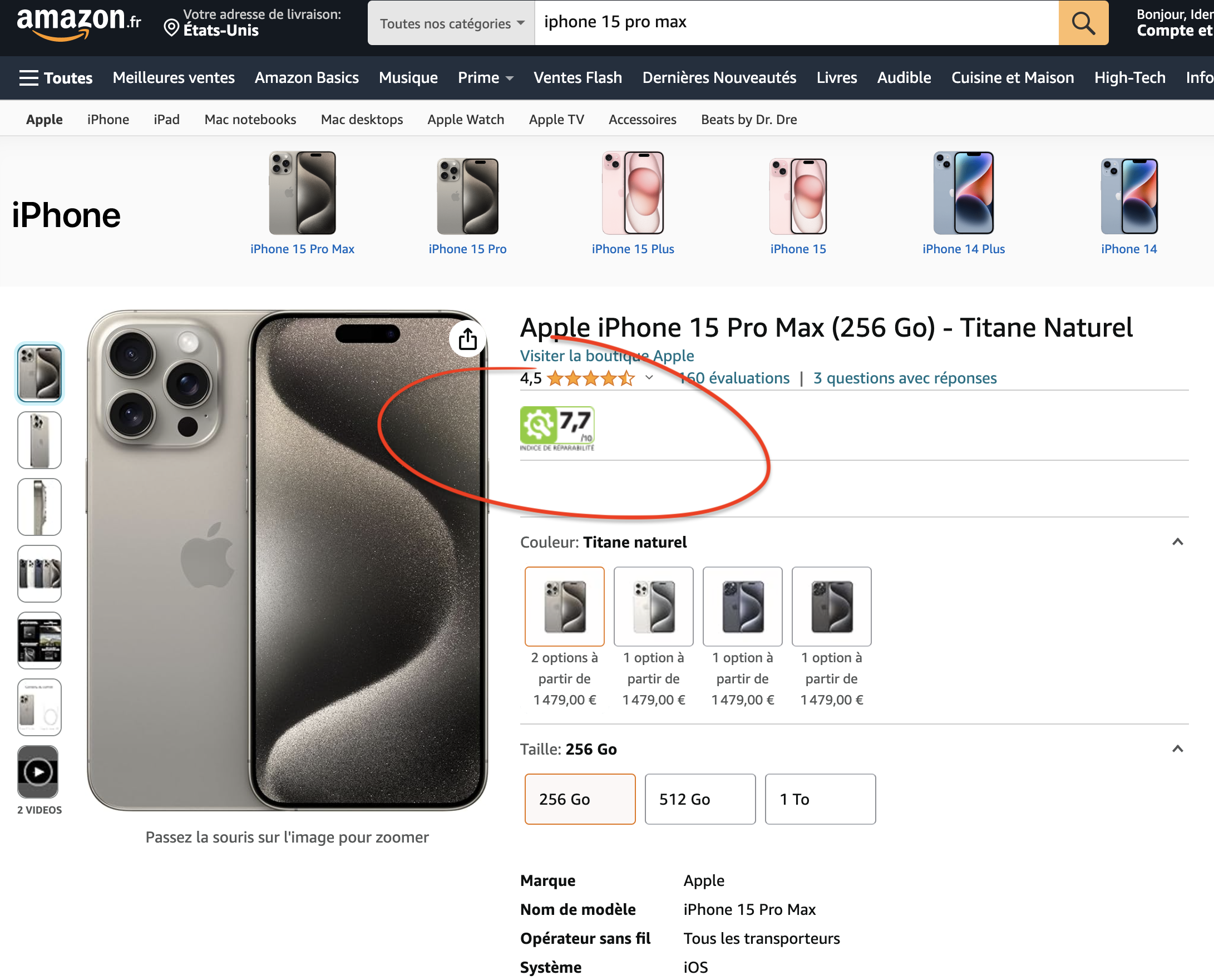
Tell Amazon: We need repair scores
Repair scores for tech such as laptops, phones, and appliances, are like EnergyGuide labels for repairability. They provide consumers with a 1 through 10 score that measures availability of spare parts, ease of disassembly, and longevity of support. This bill would cover cell phones, laptops, TVs, electric lawnmowers, top-loading washing machines, vacuum cleaners, and high-pressure washers for residential use by consumers.
Add your name.
After delivering a letter to the FTC signed by 59 state legislators in support of repair scores, on Tuesday, January 9th, I testified in support of LD 1716 which would bring repair scores to Maine.
Nobody walks into an electronics store and thinks, “I’m going to buy something that breaks.” But how do we know which products are designed to last?
Repair scores for tech such as laptops, phones, and appliances, are like EnergyGuide labels for repairability. They provide consumers with a 1 through 10 score that measures availability of spare parts, ease of disassembly, and longevity of support.
See a video of my testifying below and read the full written testimony below that.
In support of LD 1716, HP 1105 – An Act to Establish a Repairability Index for Consumer Electronic Products
an. 9, 2023
Committee On Innovation, Development, Economic Advancement and Business
Dear Chairs Curry and Roberts and members of the Committee On Innovation, Development, Economic Advancement and Business,
I direct the Designed to Last campaign for U.S. PIRG, the U.S. Public Interest Research Group, a national non-profit, non-partisan advocate for the public interest with members in all 50 states. I’m here to testify in support of Maine becoming the first in the nation to offer consumers electronic repair scores.
The right to repair campaign has been gaining ground, starting with automobiles in Massachusetts, and most recently with four states passing bills in 2023 to restore our rights to fix the stuff we own. As you can see from Maine’s ballot results, voters support choice around repair. Recently, Apple has come out in support of a national right to repair.
However, even after we require manufacturers to make repair resources like software tools and spare parts available, we’ll still have to deal with products that stop working once manufacturers end support, have glued-in and unreplaceable batteries, and are designed to be disposable — destined for the dump with the first issue.
Nobody walks into an electronics store and thinks, “I’m going to buy something that breaks.” But how do we know which products are designed to last?
Many of us have purchased something, or perhaps received a gift during the holidays, that nearly immediately stopped working after we bought it. We would like to choose electronics that are durable and fixable—and that is the purpose of this legislation, to make sure we can..
Extending the life of our products is good for our wallets—repairing instead of replacing home electronics could save Mainers $226 million per year. It’s also good for the planet: Every new item consumes resources and electronic waste is the fastest growing waste stream in the world. The majority of the environmental impact of electrics comes from the manufacturing process.
Repair scores for tech such as laptops, phones, and appliances, are like EnergyGuide labels for repairability. They provide consumers with a 1 through 10 score that measures availability of spare parts, ease of disassembly, and longevity of support. This bill would cover cell phones, laptops, TVs, electric lawnmowers, top-loading washing machines, vacuum cleaners, and high-pressure washers for residential use by consumers. The Department of Economic and Community Development will develop a rubric that manufacturers use to self-score their products, answering questions such as “How many steps does it take to replace the device’s battery?” and “Are spare parts available for purchase?” The rubric results in a simple 1 through 10 scores that retailers display to allow consumers to compare repairability across companies before they purchase expensive devices.
These scores support market transparency and a race to the top for repairability.
Companies could create their own repair scores but given the wide range of factors they could use to determine repairability, the scores would lack the ability for consumers to meaningfully compare while they shop. There needs to be a consistent repair score criteria that allows apples-to-apples comparisons, just like other successful labeling programs such as car “Monroney stickers” that allow consumers to compare fuel economy miles per gallon, engine and transmission specifications and crash test ratings. EnergyGuide is another example, which allows the comparison of appliance energy consumption.
Similar scores have been available in other countries. That means companies are already scoring their products, and this information is already helping consumers. Samsung’s research found that 86% of surveyed consumers say that the repair scoring impacts their purchasing behavior—including 8 out of 10 who indicated they would give up their favorite brand for a more repairable product. According to a report I authored which examined these scores, Failing the Fix, repair scores have helped lead to more fixable products. In other words, repair scores are already happening, they work, but Maine consumers aren’t getting the full benefits.
I strongly urge this committee to vote FAVORABLY on LD 1716, HP 1105, An Act to Establish a Repairability Index for Consumer Electronic Products.
Respectfully submitted,
Lucas Rockett Gutterman
Designed to Last campaign director
U.S. Public Interest Research Group
We need Amazon to display a repair score from 0 to 10, which tells us how fixable a product is.
Add your name.
Lucas leads PIRG’s Designed to Last campaign, fighting against obsolescence and e-waste and winning concrete policy changes that extend electronic consumer product lifespans and hold manufacturers accountable for forcing upgrades or disposal.
Report ●
